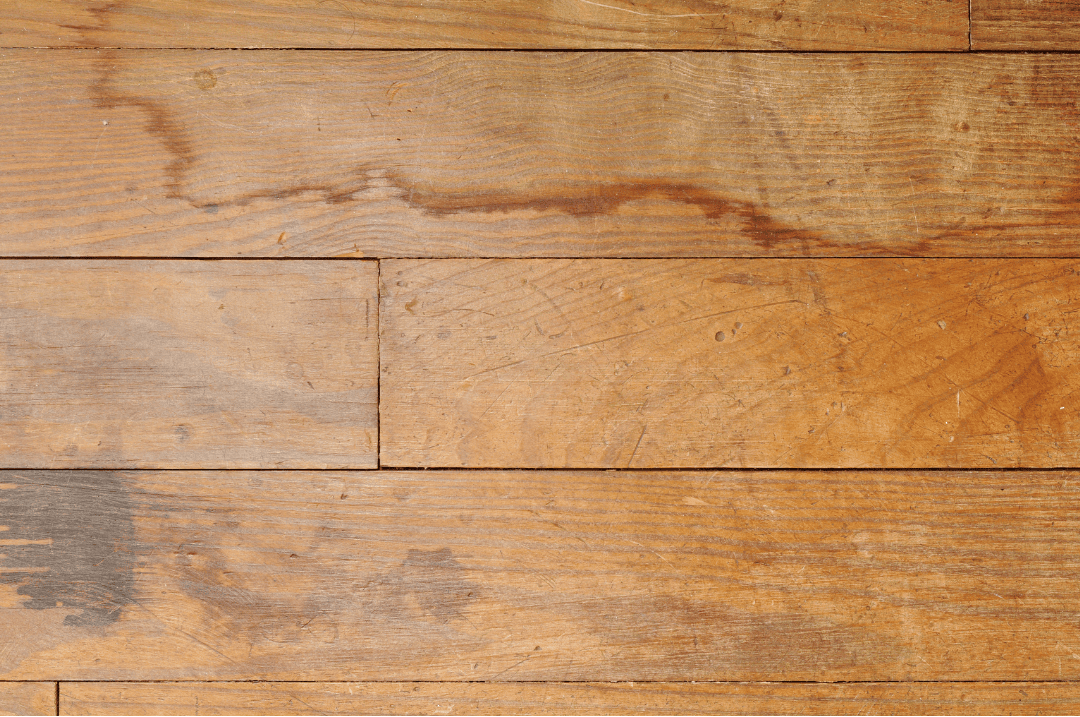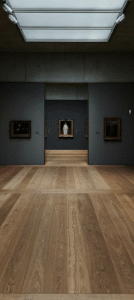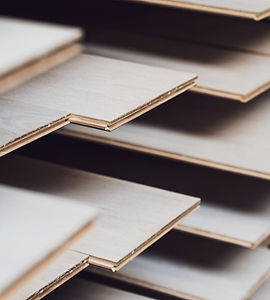While engineered hardwood or laminate floors often include a finishing step that either hardens the wood or creates a protective coating that makes them water resistant, some situations will still cause damage to your floors. Small spills are likely to evaporate before they cause significant damage, but flooding from large leaks or storms, and slow drips that go unnoticed for an extended period can cause damage. Floors being wet to the touch or water seeping through the seams may indicate flooding or leaks, but there are other signs to indicate there may be underlying water damage.
Most Common Signs of Water Damage
Darkness or Discoloration
Although some color variation is a natural feature of hardwood flooring, discoloration by water damage usually won’t enhance the authentic beauty of the wood. Water damage can cause stains and dark patches as the water evaporates and leaves minerals and salts in its wake. Depending on the wood finish used, white rings and streaks may also be left behind as the water evaporates.
Warped, Blistered or Peeling Boards
Your flooring should be smooth and even throughout the room, and any changes to that can be signs of water damage, whether by high temperatures or humidity exposure or by leaks and flooding. As it absorbs water, wood expands and softens, and this swelling can lead to overcrowding of the wood, causing it to curl and warp. The finish may also begin to peel or blister as it expands and dries.
Loose or buckling boards may also indicate that water has penetrated the layers of your engineered hardwood or laminate flooring, causing separation between the layers of the planks or between the planks and the subfloor.
Mold and Mildew
The presence of mold and mildew is one of the most common signs of water damage and can indicate extensive water damage. Often appearing as black or gray splotches or furry white patches on the floor’s surface, mold and mildew typically release a musty odor and make the room feel thick or damp. Too much mold can cause the floors to rot and the spores themselves may present numerous health and air quality issues.
What To Do If You Suspect a Water Leak
If you suspect a leak or flood, turn off the water to the source of the leak immediately.
Remove any visible water with towels, a dry mop, or a wet/dry vacuum. Once the source of the water has stopped and the excess water has been mopped up, the floor will start drying immediately. Bring in fans or air movers to help dry things out further.
Call a professional to test the moisture content of the wood to determine if the water has soaked into the core or base layers of your engineered hardwood or laminate floors and to evaluate the extent of the potential damage.
The Haute Plank Difference
Exposure to moisture is a fact of life, even in our arid desert climate, but you can rest assured that your HAUTE PLANK hardwood, which features a next-level
Titanium finish, is an extremely durable, water-resistant flooring product. Our
Maison Plank wood-veneer collection combines a strong water-resistant base layer with a top layer featuring our Titanium Ultra finish for an innovative board that is virtually waterproof – proven to resist damage up to an impressive 24 hours underwater.
See how our complete
engineered hardwood collection finished with the HP Titanium Finish and Maison Plank collections stands out as one of the toughest hardwood flooring finishes on the market, or
contact us to schedule an appointment to see these beautiful products for yourself.







